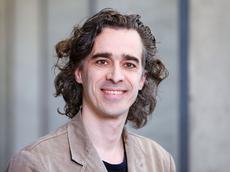Catalysts on all scales
The creative nature of chemistry has always fascinated him the most; the focus of his research are heterogeneous catalysts which have a direct impact on the development of a sustainable society.

What do you consider
to be chemistry’s greatest achievement or most important discovery?
The greatest
scientific discoveries are often made at the boundaries between different
scientific fields. For me, one of the greatest scientific breakthroughs was the
elucidation of the structure of DNA, which has had immense implications for the
fields of biology, chemistry and the medical sciences, even though it was a
physical method that unlocked its structure. In addition, the ability to
(almost) rationally modify the structure chemically and thus have control over
its function is something that is practised in many scientific fields beyond
DNA.
What do you focus on
in your research and what aspects of it are evident or usable in everyday life?
The main focus of our
research is to improve our understanding of how a heterogeneous catalyst
functions and thus design new catalysts and catalytic processes. As over eighty
percent of all products are produced with the aid of a catalyst somewhere along
the line and catalysts are widely used in the conversion, storage and use of
energy, these developments have a direct impact on the development of a
sustainable society.
What fascinated you most about chemistry?
I’ve always been
very interested in the natural sciences, but chemistry has always fascinated me
most because of its highly creative nature. Chemistry is our tool to create
matter and thus control function.
How will your research
field develop? Where does the potential lie?
Two of the main tasks
of heterogeneous catalysis are to facilitate the switch from fossil feedstock
for energy and chemicals to a sustainable one and prevent environmentally
unfriendly exhaust, which requires the development of new catalysts and
processes. Thus, the field is developing in two directions: the first is to
gain control of structure on all scales, from the atomic level up to
large-scale industrial reactors. On an atomic level, the synthesis of defined
structures will especially provide new, unique catalytic functions, which we
can only dream of nowadays. The second direction is the extension of our instrumentation
toolbox to determine the exact structure of functioning catalysts and thus
provide guidelines as to what the structure to be synthesized is. The toolbox
ranges from developing new lab-based equipment to large-scale facilities, the
combination of which enables structural determination on all scales.
What term from chemistry should everyone know
by the end of the International Year of Chemistry and why?
Element. The
elements of Mendeljeev’s periodic table are the building blocks of chemistry; they
control all matter, function and ultimately life.







READER COMMENTS